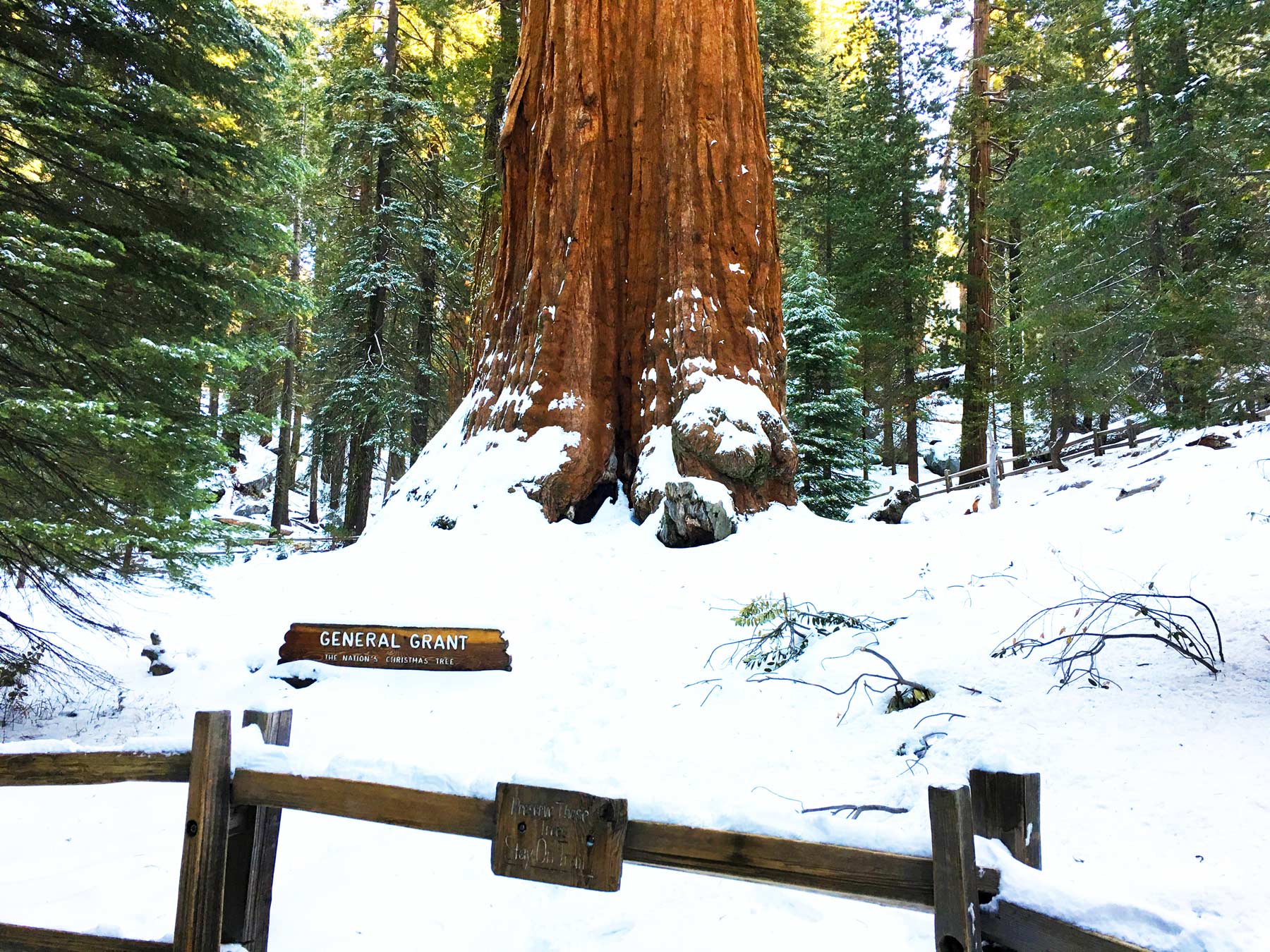
Located in Kings Canyon National Park, the General Grant Tree is the 2nd largest tree in the world. Just how big is it you ask? In this article, you’ll learn all about this amazing tree and the park which is its home.
You might also be surprised to learn that the General Grant Tree in Kings Canyon is officially known as “The Nation’s Christmas Tree.” That is not to be confused with the National Christmas Tree that stands in Washington, D.C.
In addition, you can get into Sequoia and Kings Canyon National Parks free on one day in December to make the annual “Trek to the Tree.”
We have everything you need to know about the Trek to the Tree, including ticket, safety, and park activity information. Then, we hope you read through all the other reasons this tree holds such a special place in America’s history.
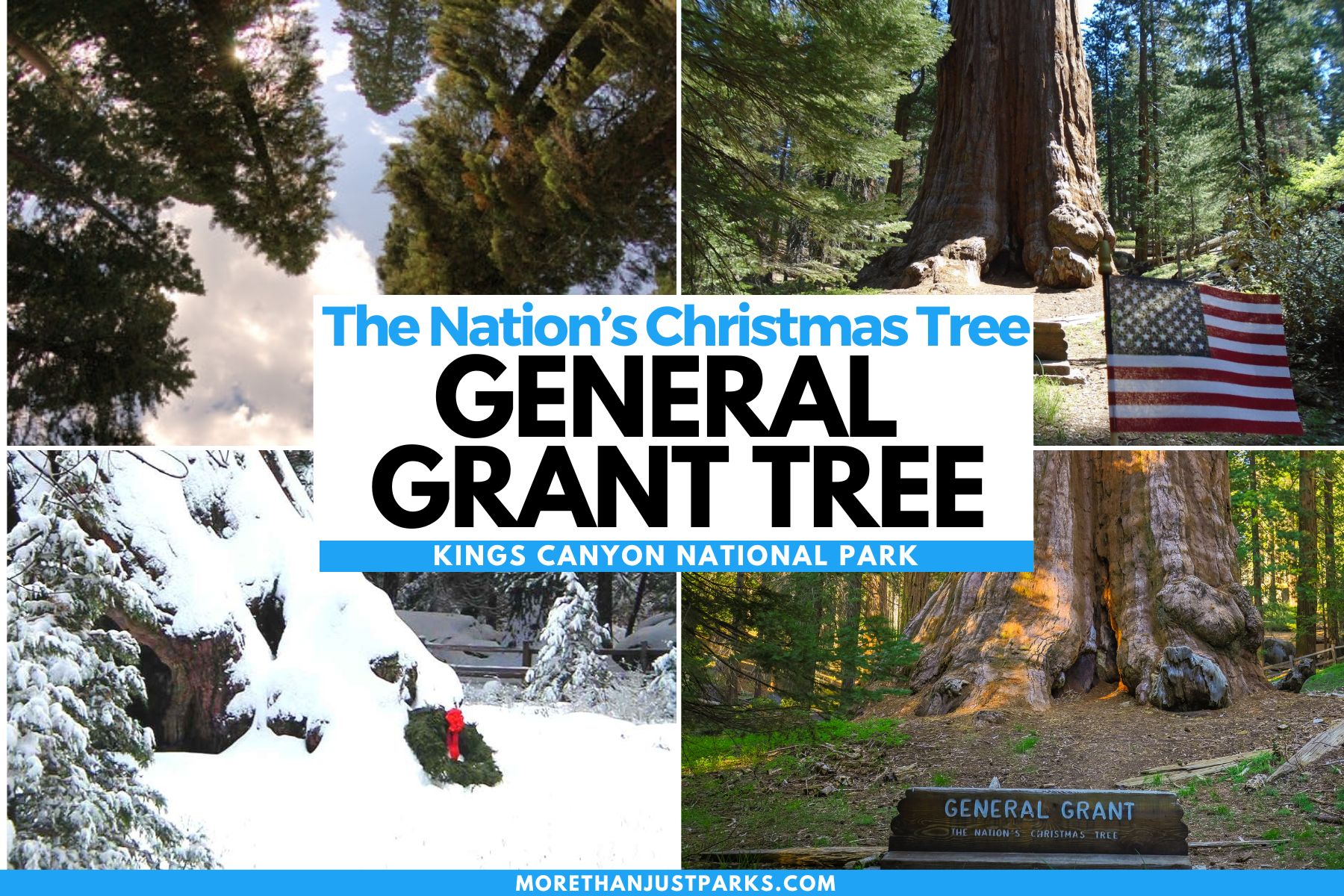
Table of Contents: General Grant Tree
Table Of Contents: General Grant Tree
General Grant Tree
- Table of Contents: General Grant Tree
- Trek to the Nation’s Christmas Tree
- More General Grant Tree Facts
- 1. History Of The General Grant Tree
- 2. The Naming of the General Grant Tree
- 3. The Nation’s Christmas Tree
- 4. National Shrine
- 5. About the General Grant Tree
- 6. Getting to The General Grant Tree
- 7. The “President” Tree
- 8. How Do These Trees Grow So Long
- 9. Kings Canyon National Park
- 10. History of Kings Canyon
- 11. The First Visitors To Kings Canyon
- 12. The Gold Rush
- 13. From John Muir To The Present Day
- 14. Two Parks Managed As One
- 15. Sequoia and Kings Canyon National Parks Feature Over 800 Miles Of Trails
- 16. More About Kings National Park
- 17. Ansel Adams Helped To Create Kings Canyon National Park
- 18. The Deepest Canyon In The US
- 19. Protected From The Wildfires
- 20. Check Out Our National Park Rankings
- About The People Behind More Than Just Parks
- Meet The Parks Brothers
- Pin General Grant Tree
- Helpful Related Links
Trek to the Nation’s Christmas Tree
One of the most little-known facts for Christmas fans is that the officially designated “Nation’s Tree” is the General Grant Tree. It has been since 1926. The nearby city of Sanger is the “Nation’s Christmas Tree City.”
While you can see General Grant any time of the year, the second Sunday in December is the annual Trek to the Tree. The event was canceled in 2020 due to the pandemic. Then, in 2022, it was canceled due to a major winter storm.
Always check the park conditions and CalTrans website/app before you head to this winter wonderland.
It takes a pretty big storm to close down this region, so dress for winter weather and cold conditions.
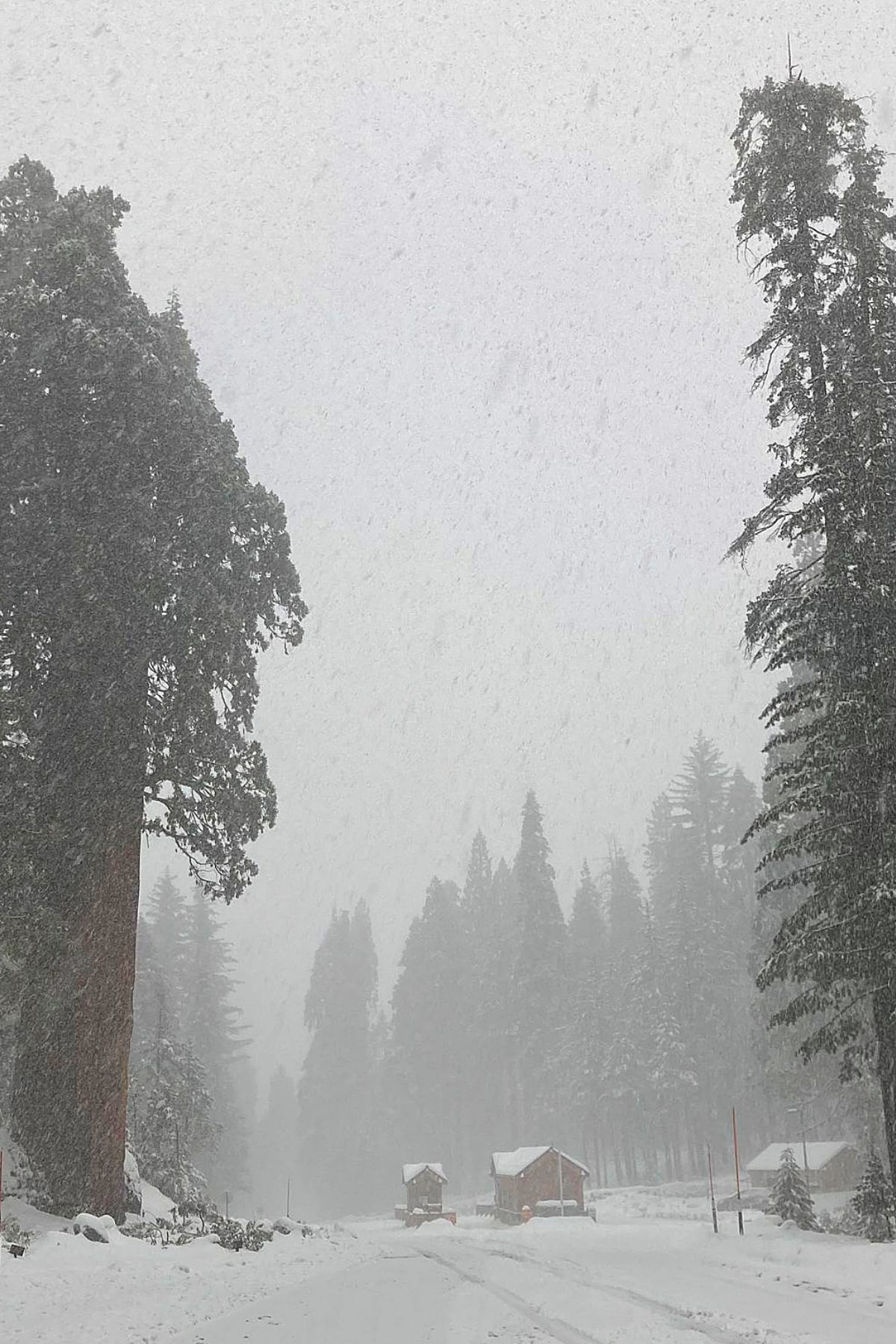
How Did General Grant Become the Nation’s Christmas Tree?
The idea started from the imagination of a little girl, who mused “What a wonderful Christmas tree (General Grant Tree) would be!” Two leaders from the local Chamber of Commerce leader happened to be standing right by her. The next year, the first Trek to the Tree was held. But the Chamber had bigger plans.
The idea went all the way to the White House. On April 28, 1926, President Calvin Coolidge made holiday history by declaring the General Grant Tree “The Nation’s Christmas Tree.”
“We are gathered here around a tree that is worthy of representing the spirit of America on Christmas Day. That spirit is best expressed in the plain things of life, the love of the family circle, the simple life of the out-of-doors. The tree is a pillar that is a testimony that things of the spirit transcend those of the flesh.”
Colonel John White, GEneral Grant national Park Superintendent in 1920s
General Grant still had one more designation in store. In 1956, President Dwight Eisenhower dedicated it as the country’s only living National Shrine to honor veterans. The two dedications come together during the December Trek to the Tree ceremony when a wreath is laid at the base of the General Grant Tree to honor the sacrifices made throughout America’s history.
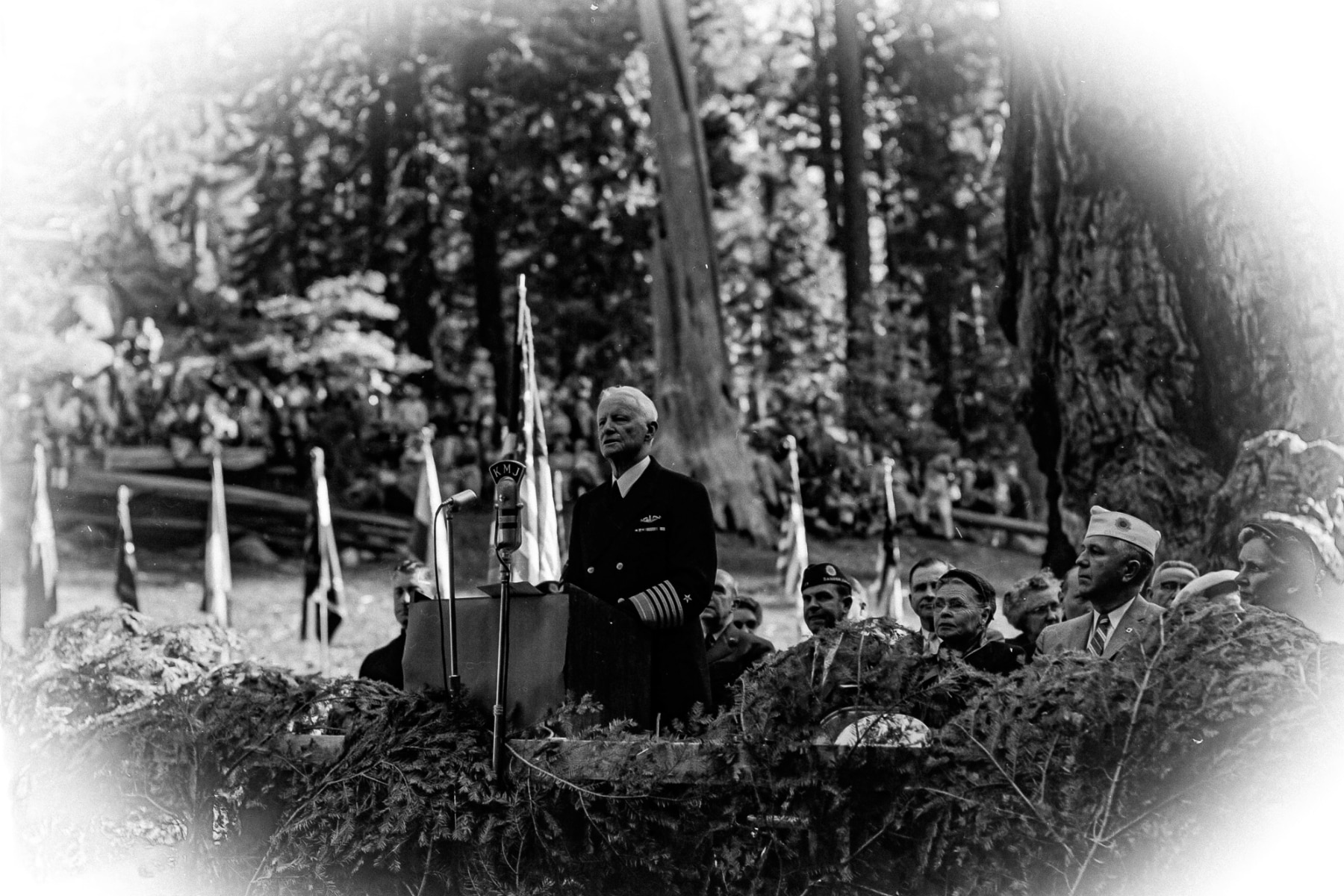
How to Take Part in Trek To the Tree
As noted above, the ceremony is always on the second Sunday in December. You can choose from one of two options.
- The Sanger District Chamber of Commerce offers tickets that include a bus ride from the city 45 miles west of General Grant Tree, brunch, and mimosas.
- Visit the park on your own (remember, free admission on the second Sunday of December for BOTH Kings Canyon and Sequoia!) and make your way to the tree for the ceremony.
Map to General Grant Tree
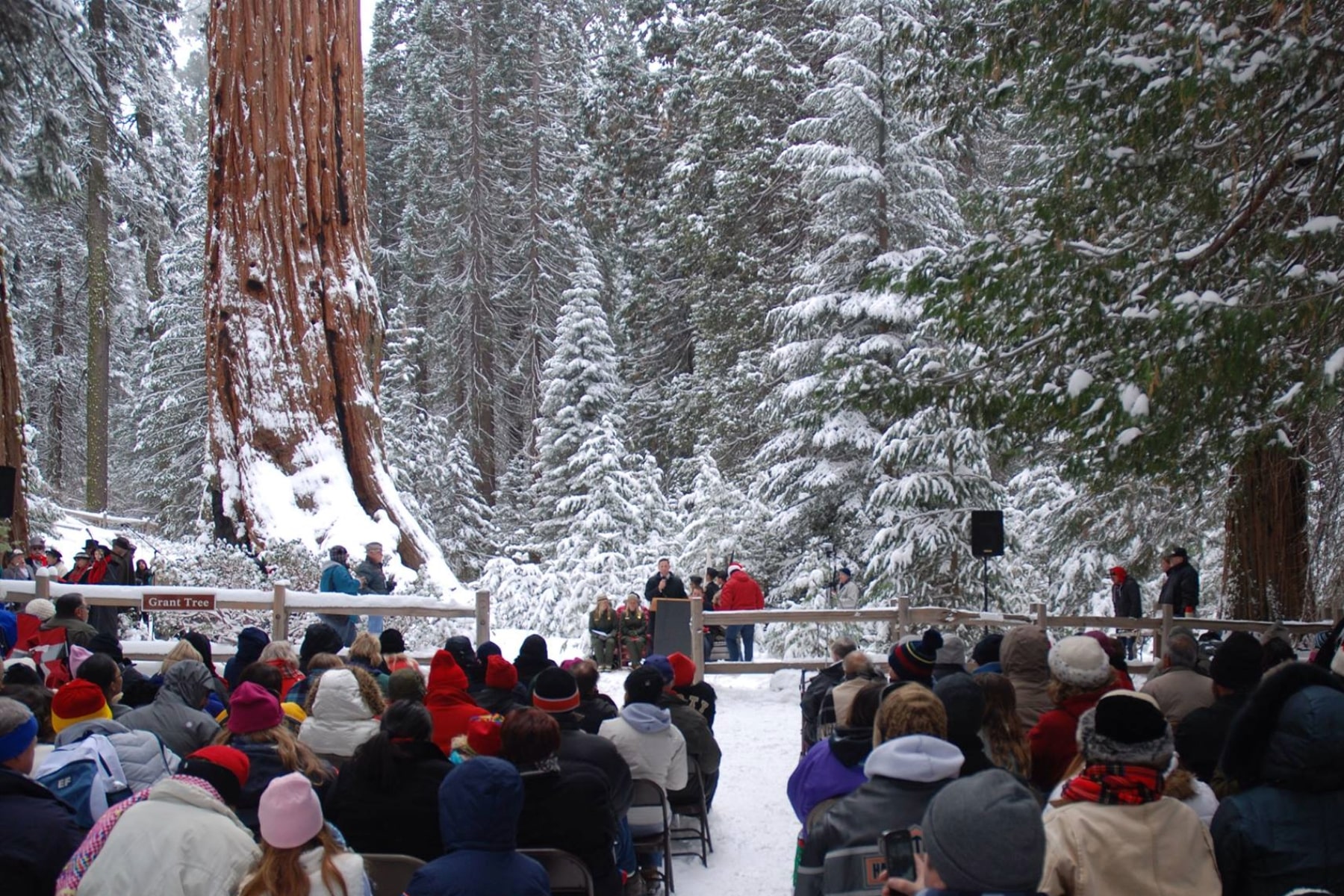
More General Grant Tree Facts
1. History Of The General Grant Tree
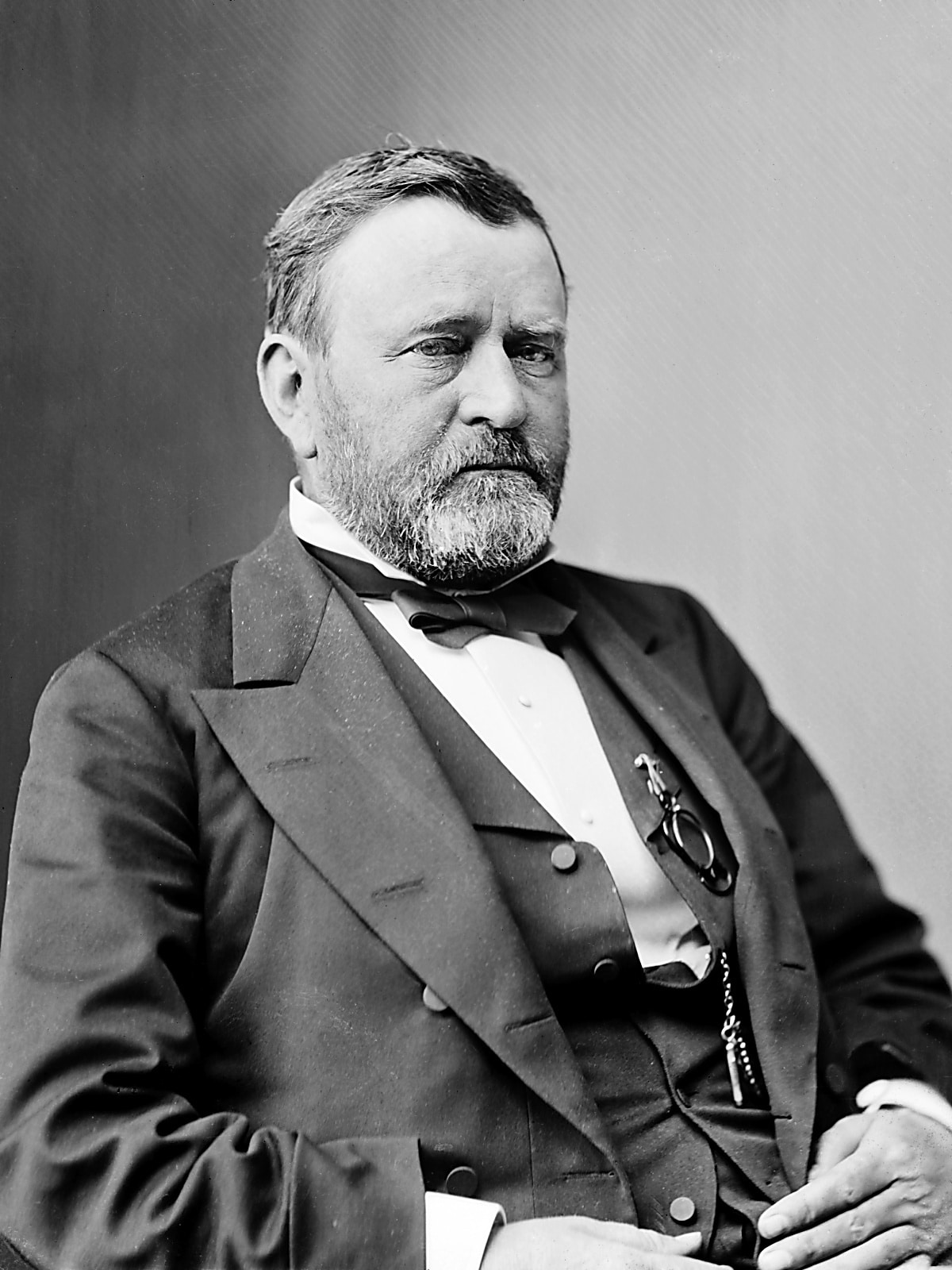
The General Grant Tree is the largest giant Sequoia tree in the General Grant Grove section of Kings Canyon National Park. It is the second-largest tree in the world.
The largest tree in the world is its neighbor, the General Sherman Tree, which is located in nearby Sequoia National Park.
RELATED: General Sherman Tree: Everything You Need To Know About The World’s Largest Tree
2. The Naming of the General Grant Tree
So how did this tree get its name? This is a story that’s not without controversy. Lumberman Joseph Thomas Hardin discovered the tree in 1862. He claimed to have named it to honor then-Civil War General U.S. Grant.
Most park historians, however, give the credit for naming the tree to Lucretia P. Baker who camped near the tree with her family on August 20, 1867.
Hudson D. Barton’s Letter
Those who support Baker’s claim cite President Grant’s letter to her thanking her for the honor. Those who support the Thomas claim cite fellow lumberman Hudson D. Barton’s statement that the tree was already named in 1866 when it was officially measured.
Whether it was named in 1862 or 1867, there’s no debate that it was named after the victorious Civil War General Ulysses S. Grant.
3. The Nation’s Christmas Tree
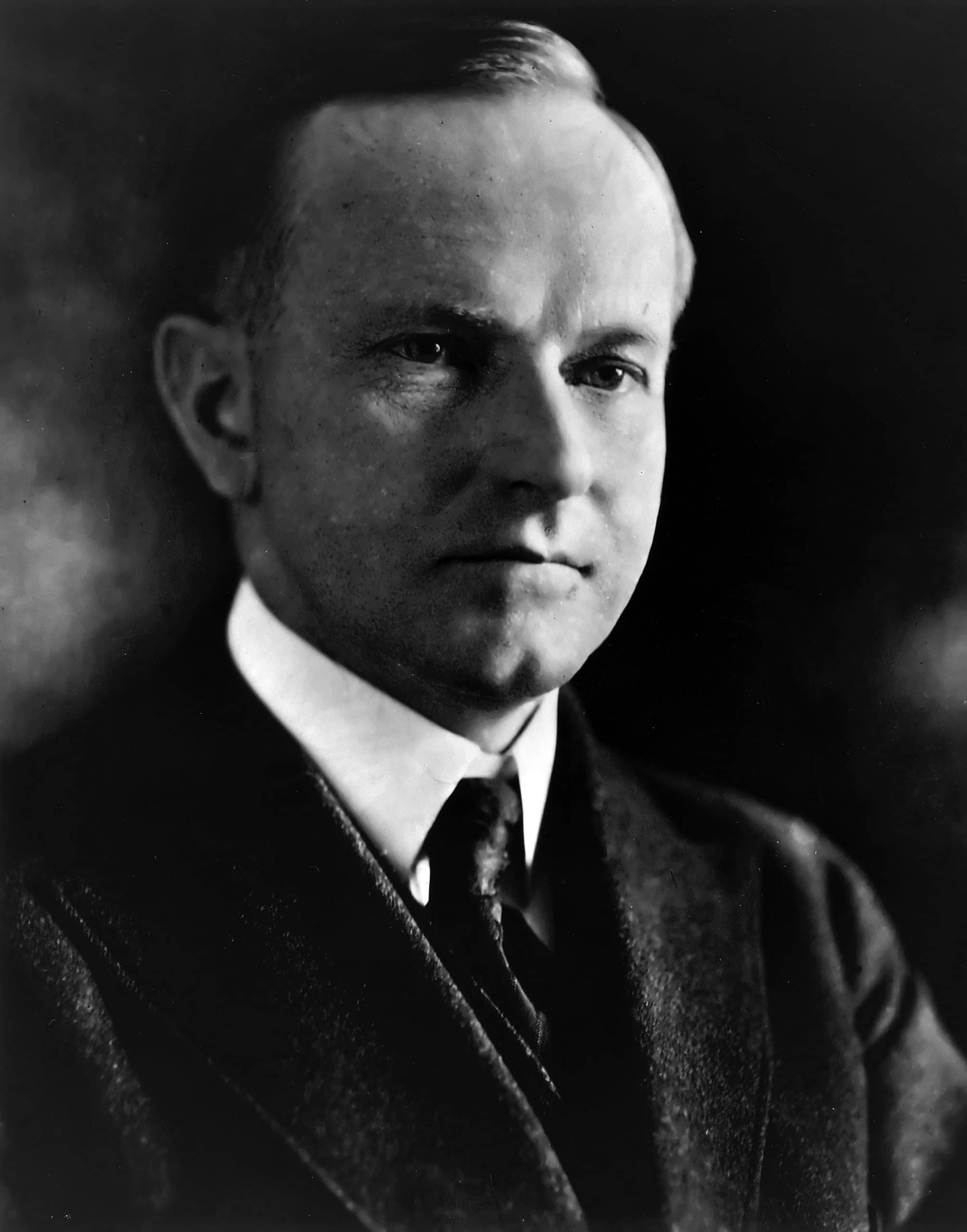
On April 28, 1926, President Calvin Coolidge named the General Grant Tree the “Nation’s Christmas Tree.” At the time, it was thought to be the largest tree in the world.
In 1931, however, precise measurements indicated that the General Sherman Tree was slightly larger. For once, it appears that Sherman went farther than Grant.
4. National Shrine
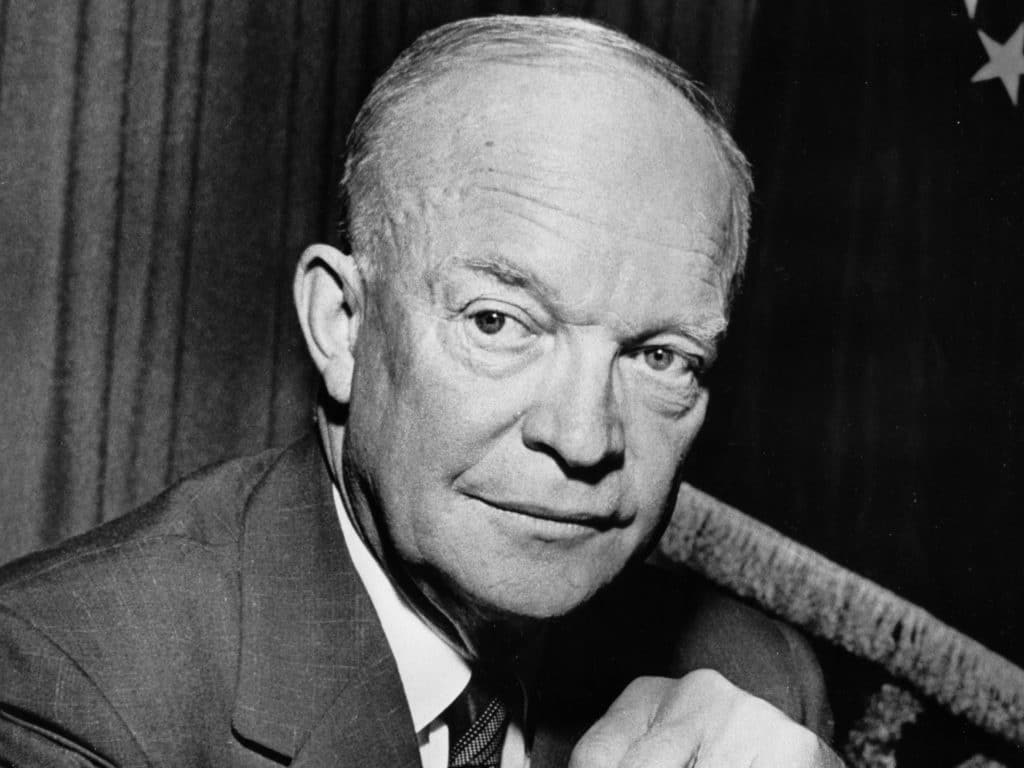
As noted above, another victorious general and president of the United States, Dwight D. Eisenhower, declared the tree a “National Shrine,” a memorial to those who died in war. It is the only living object to ever be declared such a memorial.
Each year, during a Christmas ceremony, park rangers place a large wreath at the base of the General Grant Tree, in remembrance of those who gave their lives.
5. About the General Grant Tree
So, just how big is the General Grant Tree? Pretty massive. According to the NPS, the General Grant Tree is as tall as a 16-story building!
Height: 267 feet tall
Width: 29 feet wide (at its base)
Age: 3000 – 4000 years old
Trunk Weight: 565 Tons
Trunk Volume: 45,232 Cubic Feet
RELATED: 10+ (GIANT) Sequoia Tree & Kings Canyon National Park Facts You Probably Didn’t Know
6. Getting to The General Grant Tree
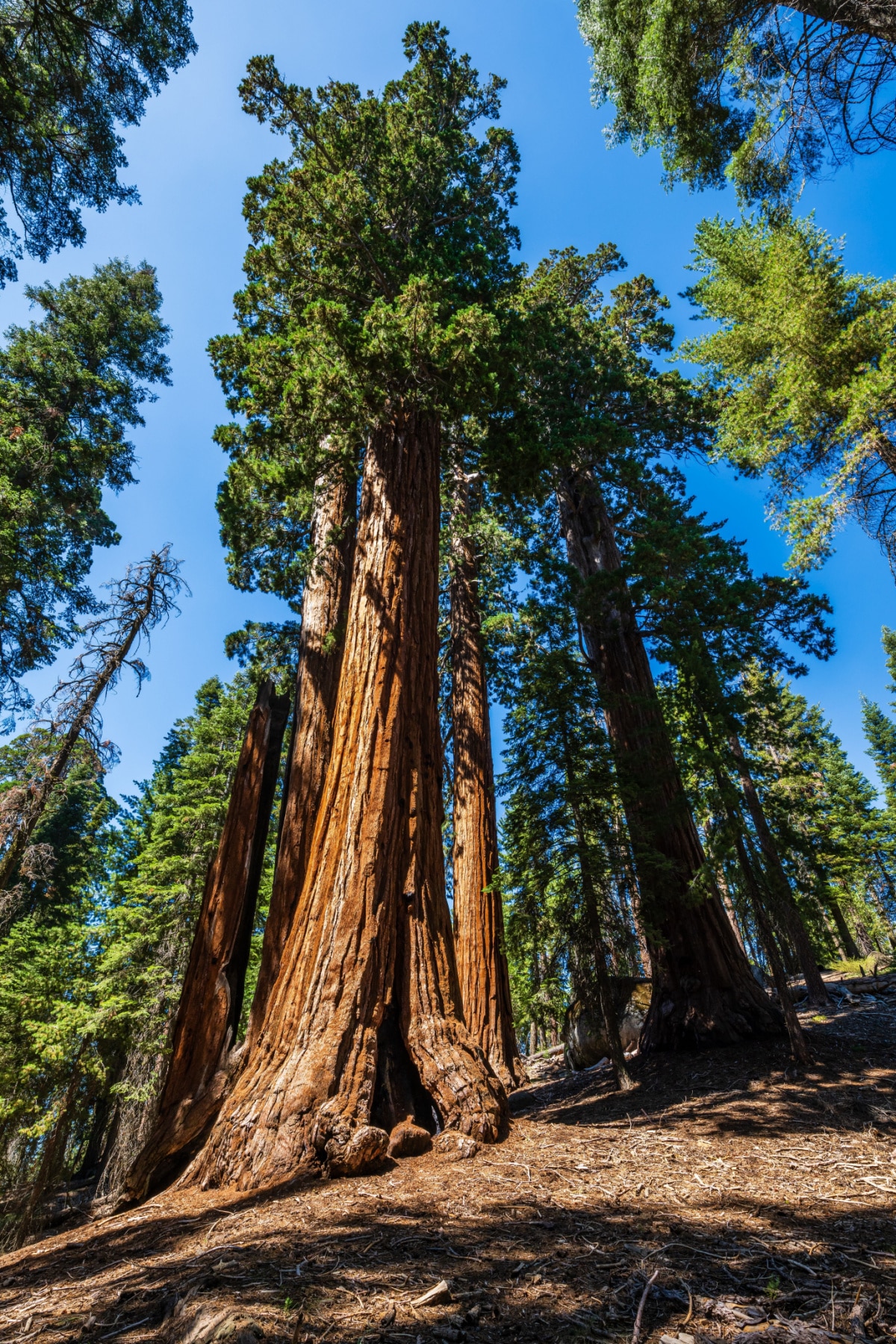
The General Grant Tree is located in the Grant Grove at Kings Canyon National Park. It’s one of the world’s premier sequoia habitats with several of the world’s largest trees.
A paved 0.8-mile loop will take you to this magnificent tree and a grove of giant sequoias around the General Grant Tree.
The General Grant Tree Trail is typically filled with hikers. There you will find informative panels and astonishing trees.
“No other tree combines such massiveness of trunk with such height…. Spruces and pines of majestic port standing around look like saplings….
-Julia Ellen Rogers, “The Big Tree and the Redwood,” The Tree Book: A Popular Guide to a Knowledge of the Trees of North America and to their Uses and Cultivation, 1905
They look up, but the Sequoias look—not down but out, indifferent to all that is transpiring below them. They see only the limitless reaches of the eternal sky…”
7. The “President” Tree

As long as we’re listing the world’s tallest trees, here’s another. The third-largest tree in the world, based on volume, is a giant sequoia known as”The President.” While the tree was named after President Warren G. Harding in 1923, it’s not hard to find it because it’s on Congress Trail near the “House” and “Senate.” Here at Sequoia National Park, Congress comes in the form of groups trees standing there. (Insert favorite political pun here)
It is approximately 247 feet (75 m) high, and 27 feet (8.2 m) in diameter at the base. This tree also happens to be the oldest known living sequoia. It has been growing for 3,200 years.
8. How Do These Trees Grow So Long
How is it that sequoia trees can grow for so long? They are able to protect themselves against natural threats. The tannic acid found in their sap helps the trees fight off fungal rot, protects them from parasites and acts as a fire repellent against low-intensity burns.
The only way these amazing trees reproduce is through seeds. These seeds remain in their pine cones for almost twenty years without seeing any sunlight.
Believe it or not, the heat which results from naturally occurring forest fires helps to release these seeds from the pine cones into the soil.
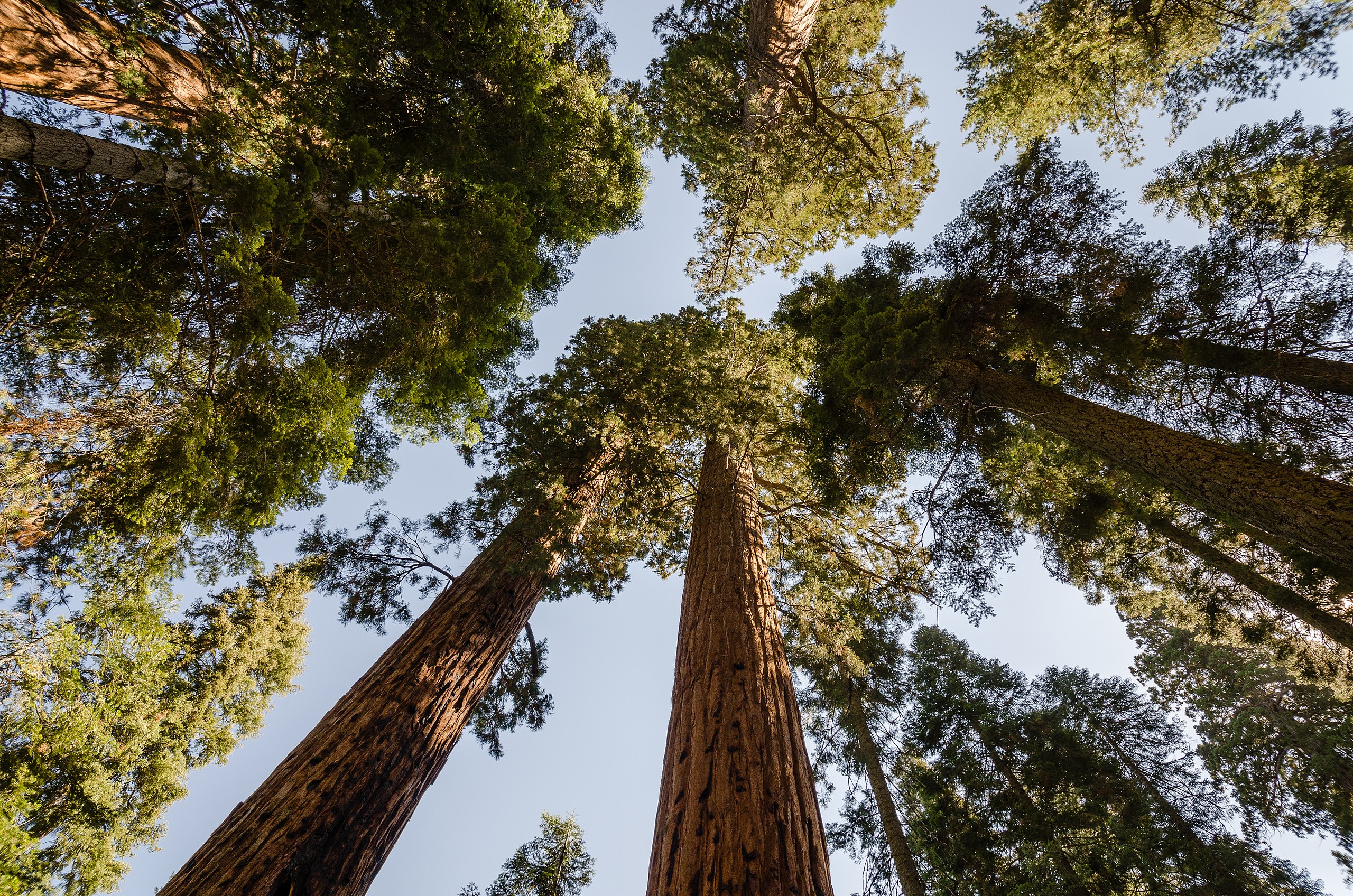
“The sequoias belong to the silences of the millenniums. Many of them have seen a hundred human generations rise, give off their little clamors and perish. They seem indeed to be forms of immortality standing here among the transitory shapes of time.”
-Edwin Markham
9. Kings Canyon National Park
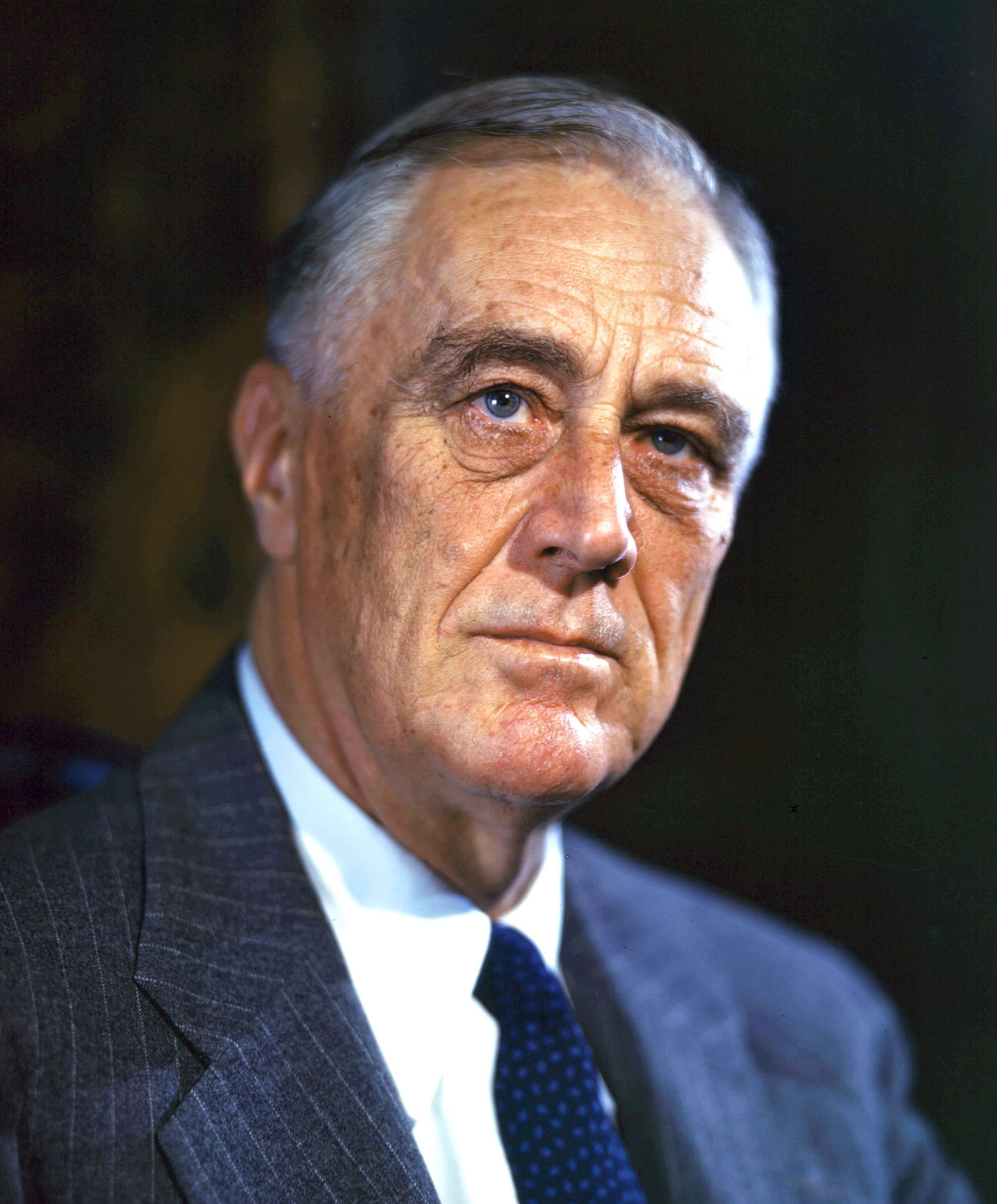
General Grant Tree
10. History of Kings Canyon
Sequoia National Park is our nation’s second oldest having been created in 1890. A week after its creation, General Grant National Park was established to protect the sequoias in the General Grant Grove.
In 1940, Congress and President Franklin D. Roosevelt created Kings Canyon National Park.. It incorporated the area of General Grant National Park with the spectacular canyons and high Sierra country to the east.
Kings Canyon’s origins go back to General Grant National Park so it shares the title of the nation’s third oldest national park with Yosemite.
11. The First Visitors To Kings Canyon
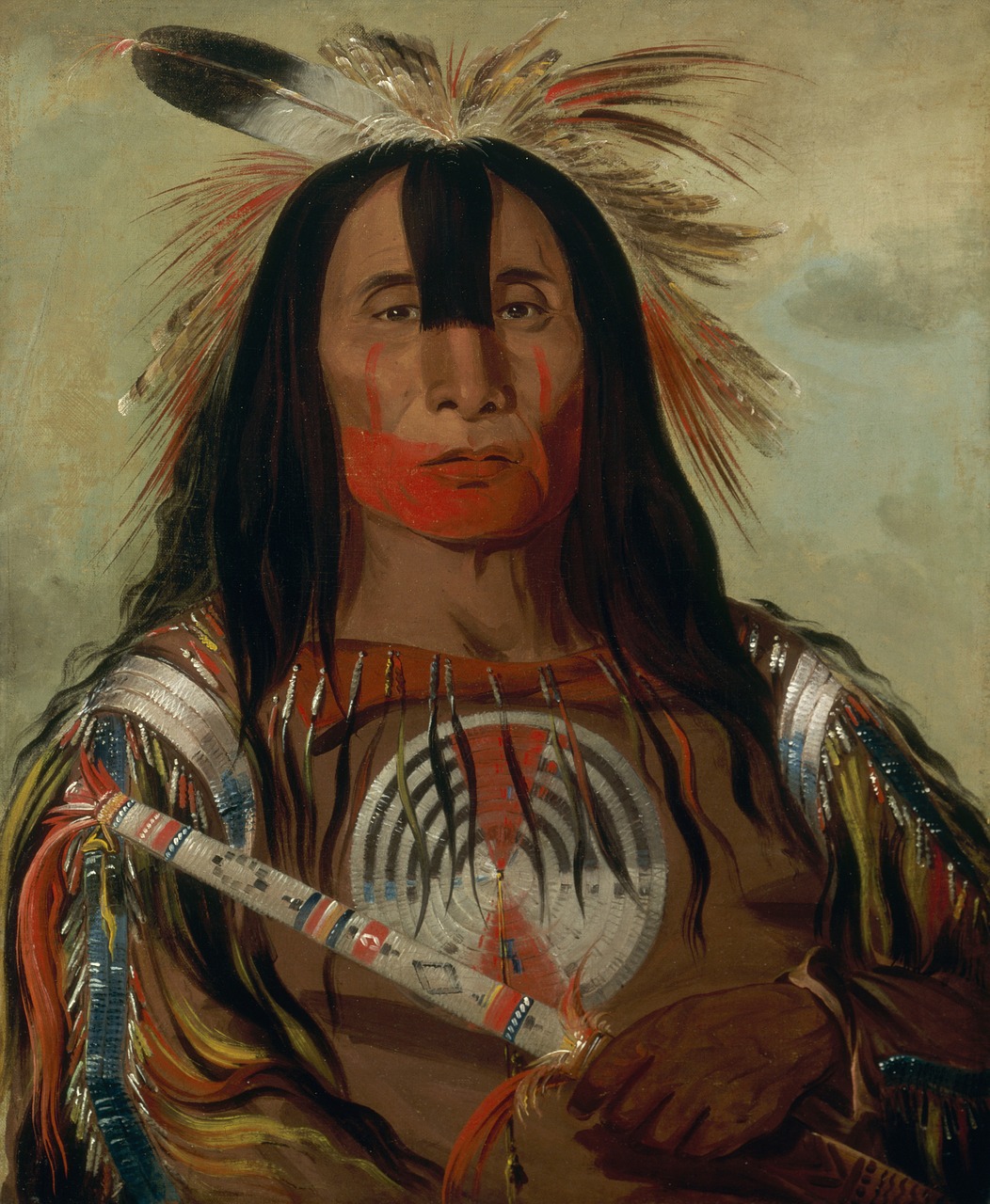
The first Native Americans to live in the area were a part of the Paiute Nation, migrating westward over the mountains to the Mono Lake area. They subsisted on deer, and other small game for food and developed a trading network that stretched across the mountains and into Owens Valley.
The first Europeans arrived in 1806. Spaniard Gabriel Moraga and his expedition discovered a major river which they named it El Río de los Santos Reyes – The River of the Holy Kings, later changed to Kings River.
12. The Gold Rush
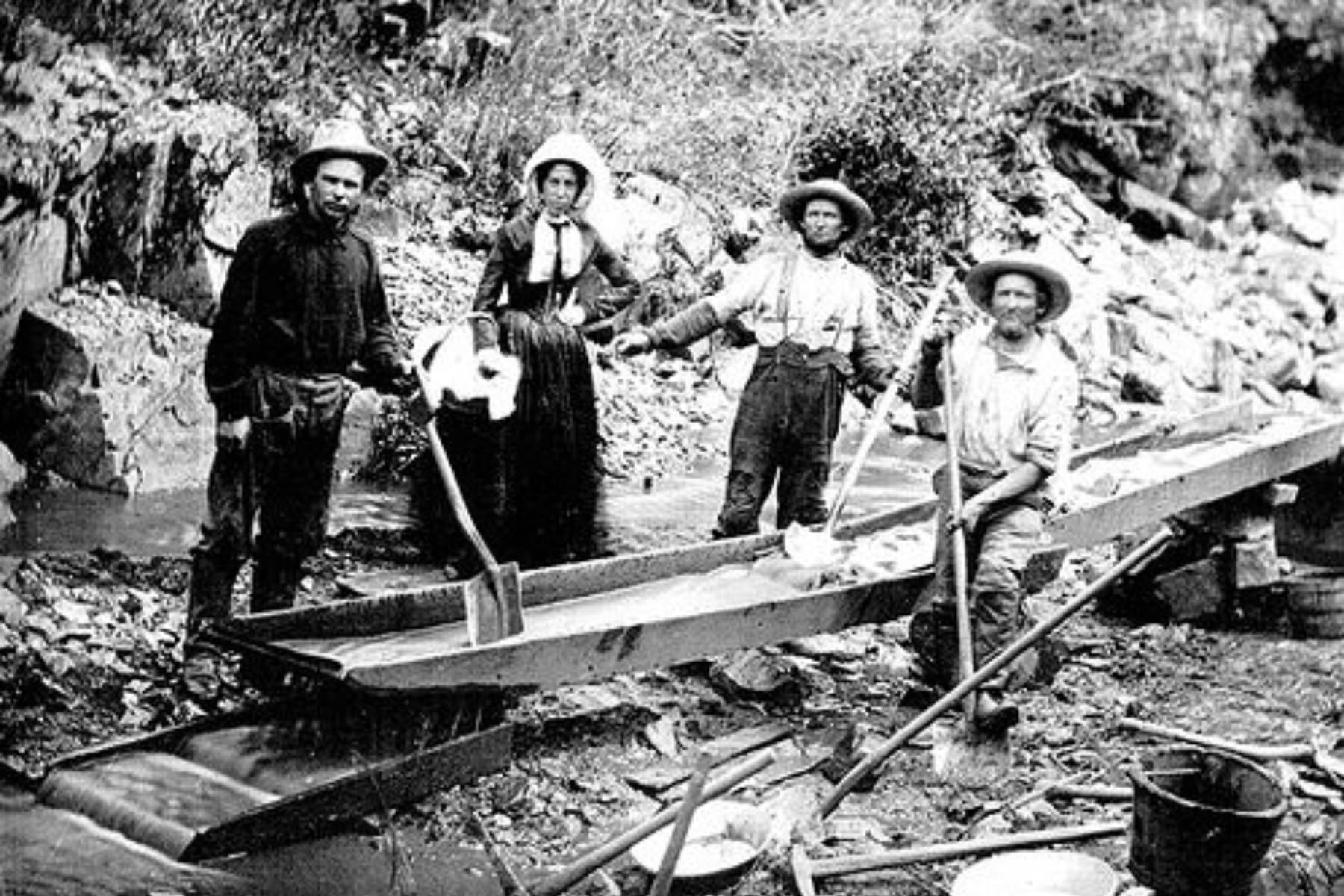
Americans did not start arriving in any numbers until the Gold Rush of 1849. These newcomers came in search of gold and began the first comprehensive exploration of the Sierras.
What they found, instead, was smallpox, measles, and other diseases which devastated local Native American hamlets. The Epidemic of 1862 almost wiped them out entirely.
13. From John Muir To The Present Day
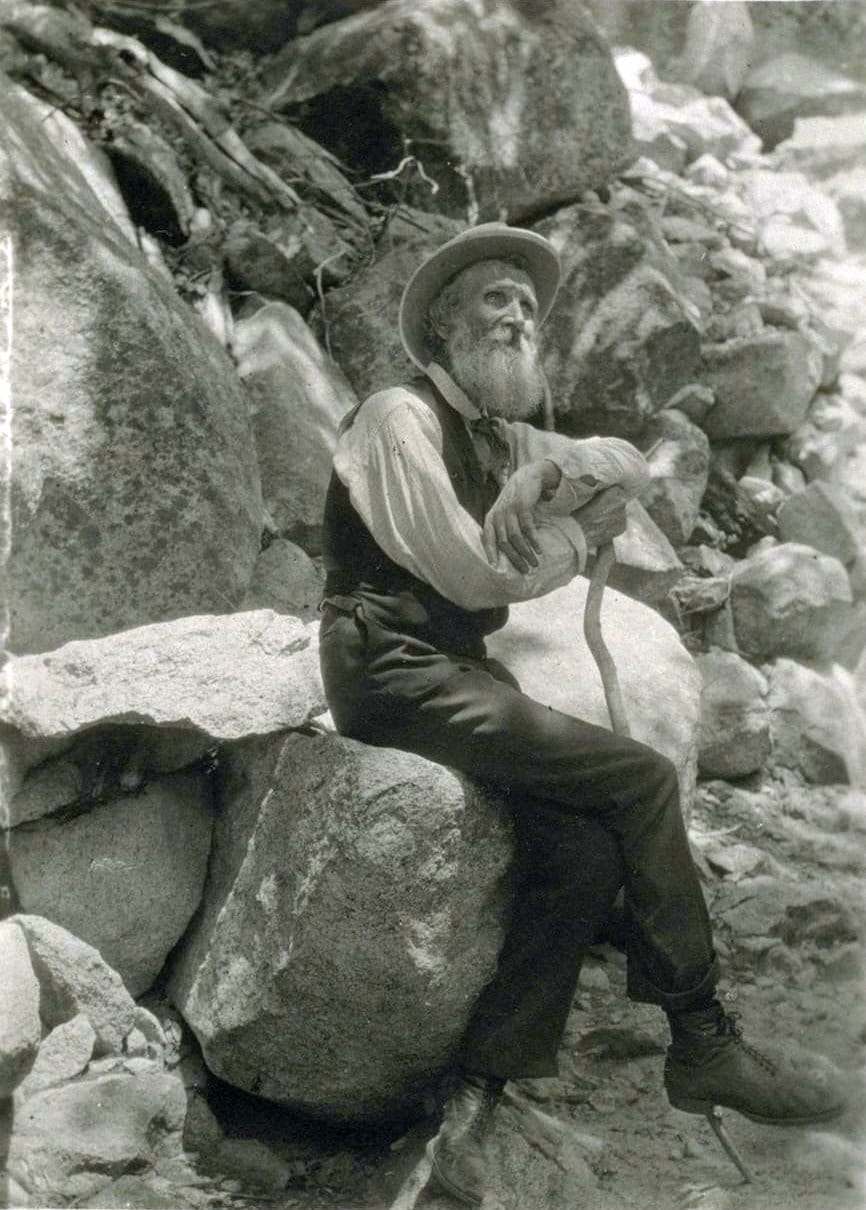
John Muir, America’s legendary conservationist, arrived in 1873. He called it “a yet grander valley” and “a rival of the Yosemite.”
In 1926, National Park Service Director Stephen Mather, Congressman Frederick Gillett and Gilbert Grosvenor, president of the National Geographic Society, joined forces to add nearly 2,000 acres to General Grant National Park.
14. Two Parks Managed As One
When Kings Canyon was created in 1940, General Grant National Park became part of the new park instead. During World War Two, Sequoia and Kings Canyon were managed as one park to save the government money. This management policy continues to the present day.
CHECK OUT: 15 (GIANT) Sequoia & Kings Canyon National Park Facts You Probably Didn’t Know
General Grant Tree
15. Sequoia and Kings Canyon National Parks Feature Over 800 Miles Of Trails
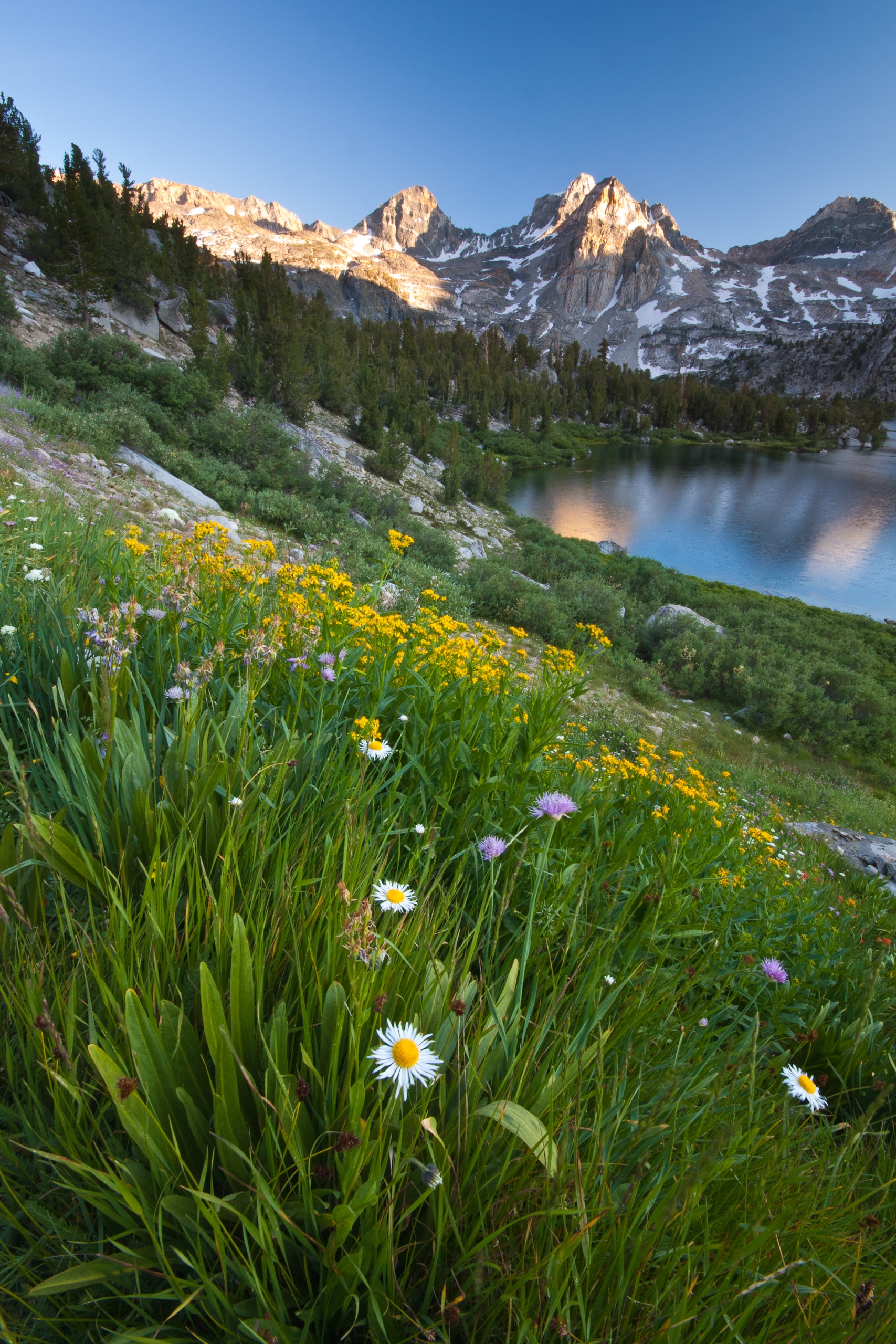
To paraphrase Nancy Sinatra, “These parks are made for walking. That’s just what they do.” While you’re visiting the world’s tallest tree, why not check out some of the incredible hiking trails at Kings Canyon and Sequoia National Parks?
If walking’s what you love to do then check out the John Muir Trail. It’s a 221-mile trail stretching from Yosemite Valley to Mount Whitney. It travels through Kings Canyon and into Sequoia so you get two national parks for the price of one.
If you’re a hiker then know that the best hiking season is from July to September when the weather is sunny and dry. Permits are not required for day hikes unless you’re planning to hike Mount Whitney. Consider going in the early morning or evening hours to escape the heat of the day.
16. More About Kings National Park
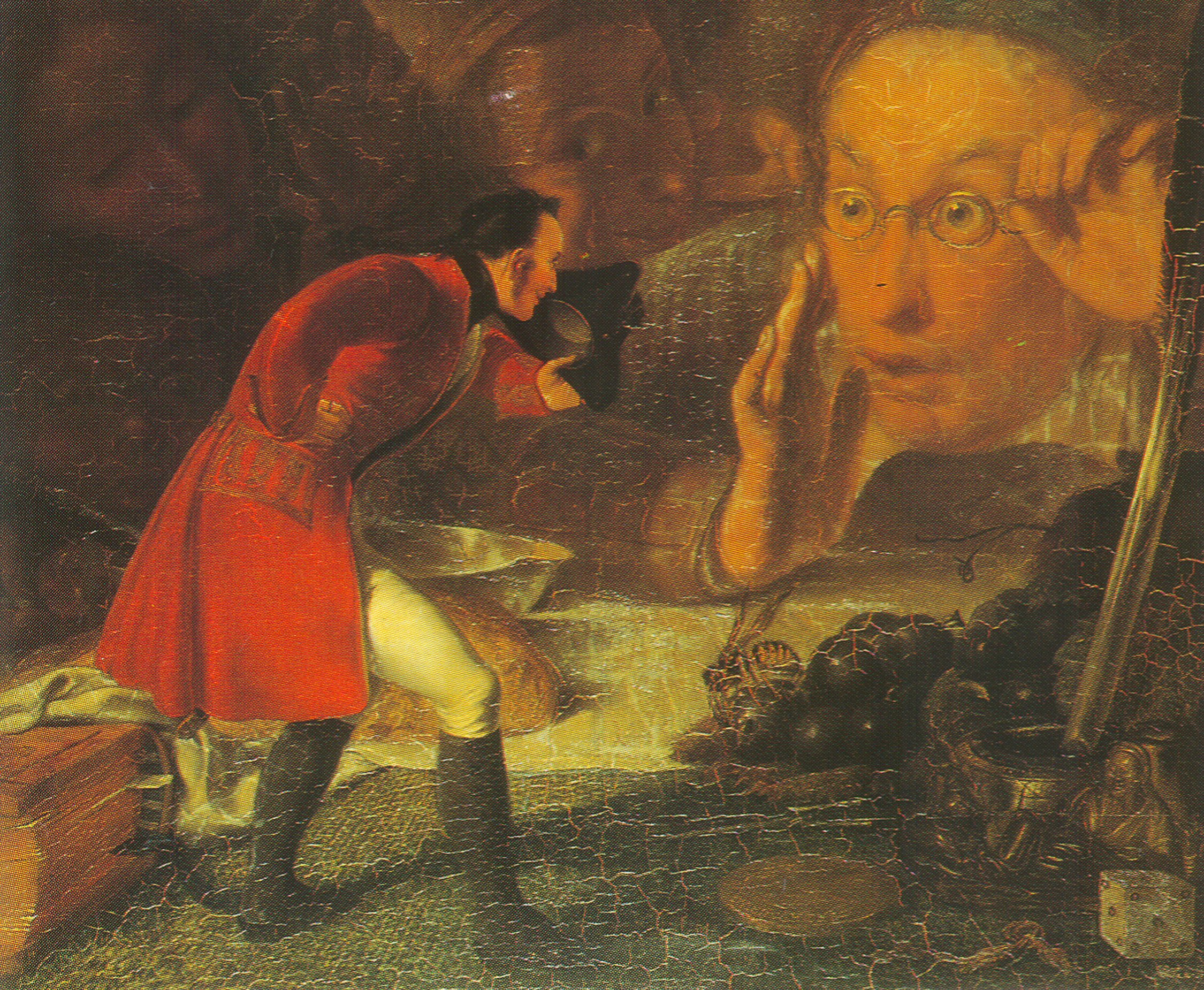
If you’ve read Jonathan Swift’s classic, Gulliver’s Travels, or Travels into Several Remote Nations of the World, it’s the story of Lemuel Gulliver who journeys to four amazing lands.
While his most famous voyage was to Lilliput (ergo the “Lilliputians” or “Little People”), in one of Gulliver’s other journeys, he travels to the land of Brobdingnag where a blade of grass is as tall as a tree.
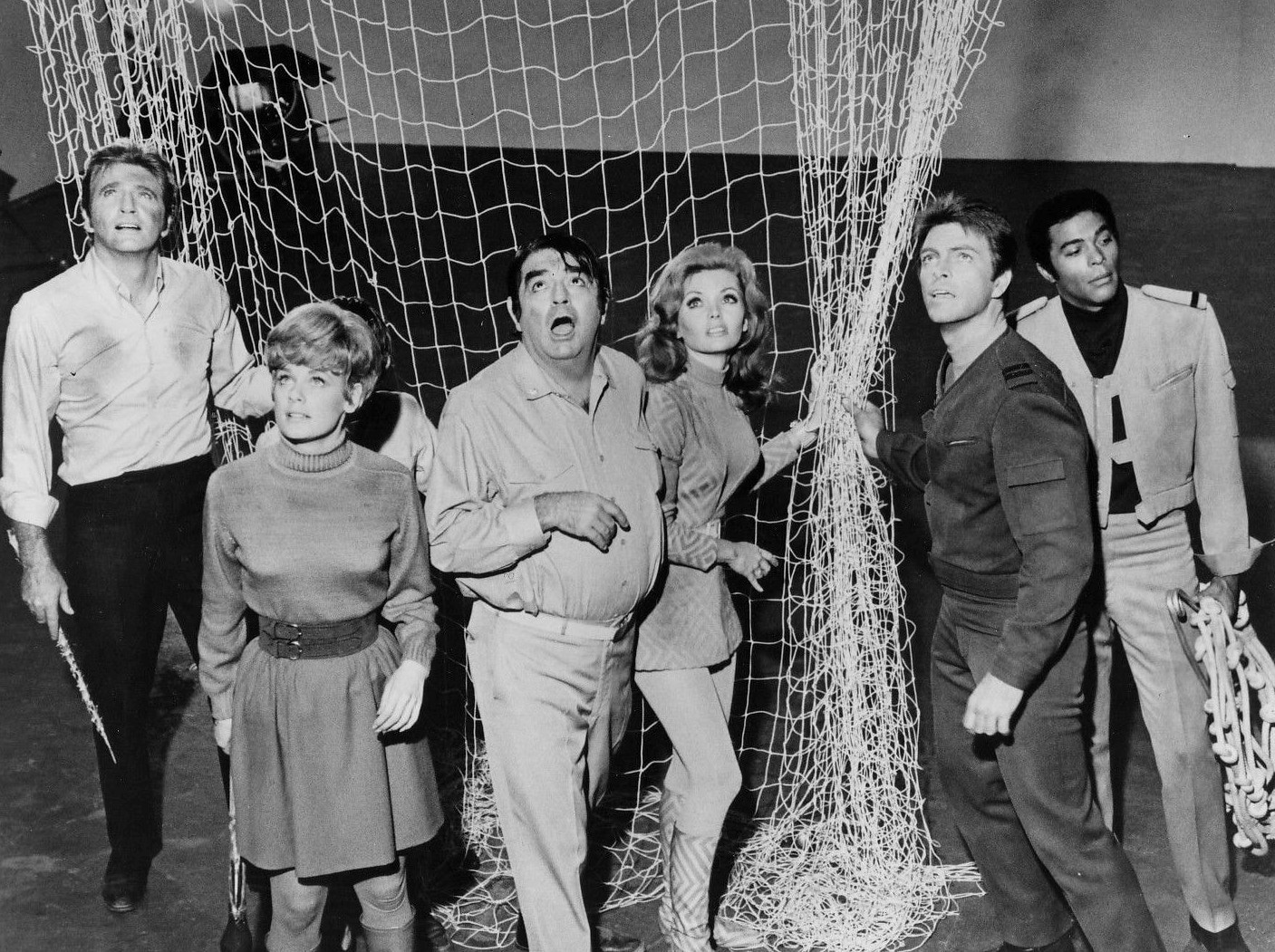
You don’t have to travel to Brobdingnag to experience what Gulliver did. Travel to Kings Canyon National Park where the trees are so tall and so amazing that you’ll feel like a Lilliputian in this land of the giants.
These massive Sequoia trees actually grow between 5,000 and 8,000 feet in elevation.
How is this possible you might ask? At Kings Canyon, the winters are relatively mild which makes it a perfect natural habitat for these incredible specimens to grow and thrive.
17. Ansel Adams Helped To Create Kings Canyon National Park
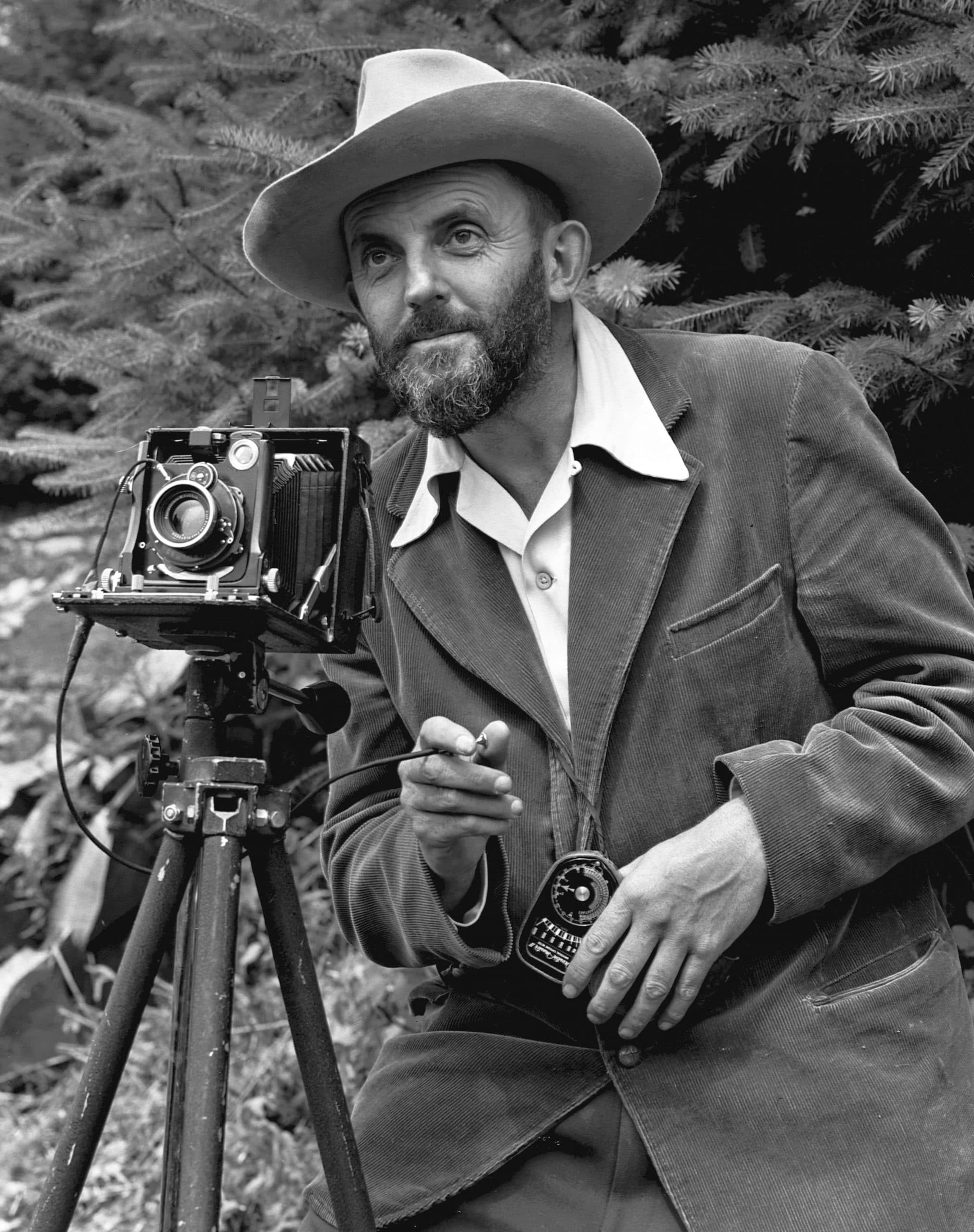
Ansel Adams was born on February 20, 1902, in San Francisco, California. As a thirteen-year-old, he took his Brownie box camera with him and began to photograph the natural wonders around him including Yosemite.
Adams met some of the great conservationists of his time including Joseph N. LeConte, William E. Colby, and Stephen T. Mather. Adams became a conservationist himself. He used his magnificent photographs of Kings Canyon to lobby members of Congress to create a national park there.
RELATED: Meet The Real Life Batman & Robin Of The National Parks (Masking Included)
Adams Lobbies Congress
As Phil Archer of the National Parks Conservation Association notes, “He toted his portfolios from Senate to House, meeting with more than 40 members of Congress, telling his story of finding his life’s purpose in the parks.
He spoke before a conference on the National Park Service and there met Harold Ickes, secretary of the Interior, and shared his photographs with him.”
“Adams assembled his Kings Canyon images with others made in the Sierra and published them as a book, “Sierra Nevada: The John Muir Trail,” in 1938.
He sent a copy to Secretary Ickes, who shared it with President Franklin D. Roosevelt. Kings Canyon National Park was created the following year, putting half a million acres under protection.” (Source: Phil Archer, ‘A Silent but Most Effective Voice’: Ansel Adams and Advocacy, NPCA)
18. The Deepest Canyon In The US
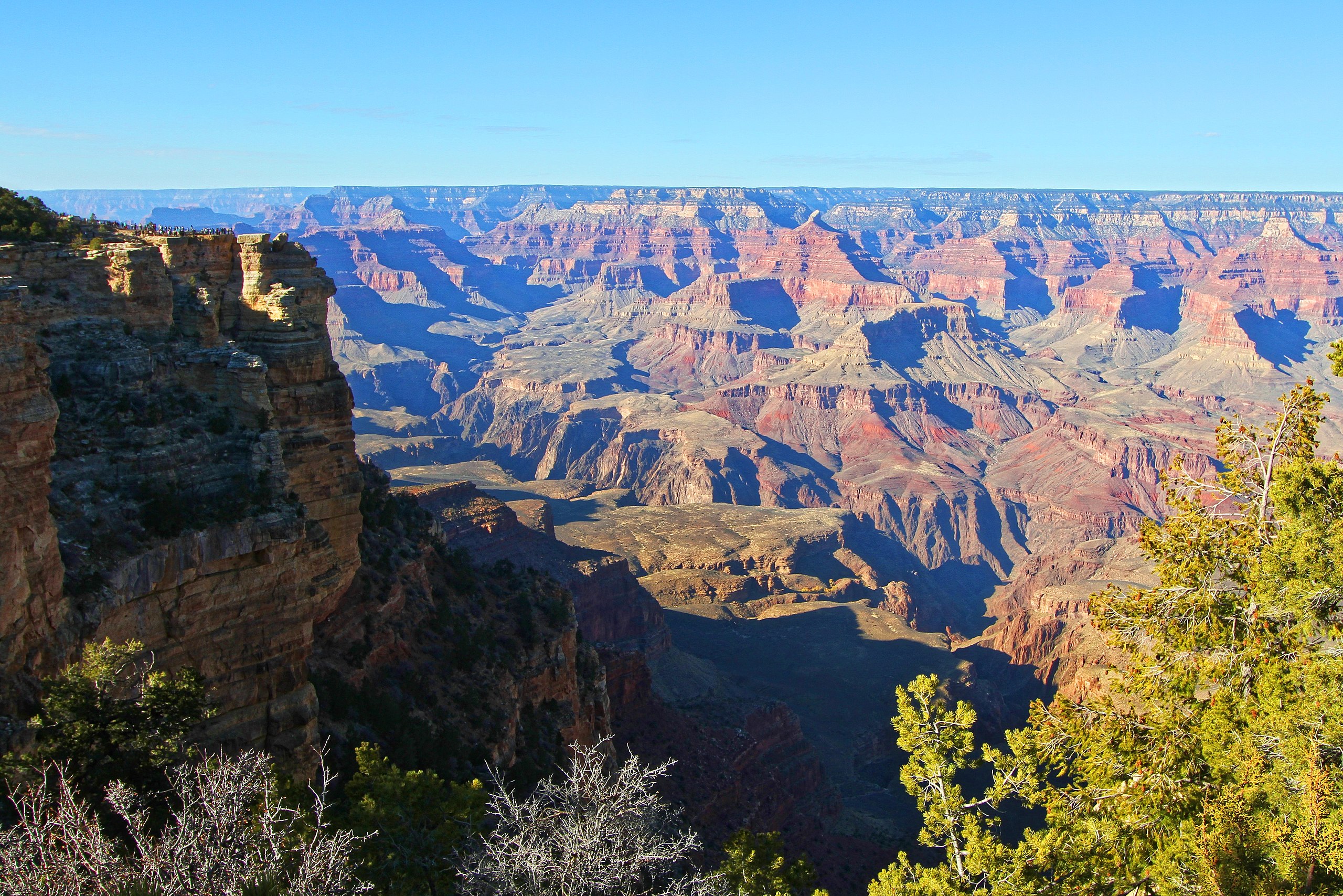
If you ask someone to name the deepest canyon in the United States, odds are they will say it’s the Grand Canyon. At over 6,000 feet, the Grand Canyon is very deep indeed, but it’s not the deepest canyon.
That honor goes to Kings Canyon. It reaches a depth of 8,200 feet. And, best of all, you can drive right down to the bottom of the canyon on the Kings Canyon Scenic Byway, which links the park’s main visitor centers of Grant Grove and Cedar Grove.
RELATED: 11 (BEST) Best National Parks To Visit 2021
19. Protected From The Wildfires
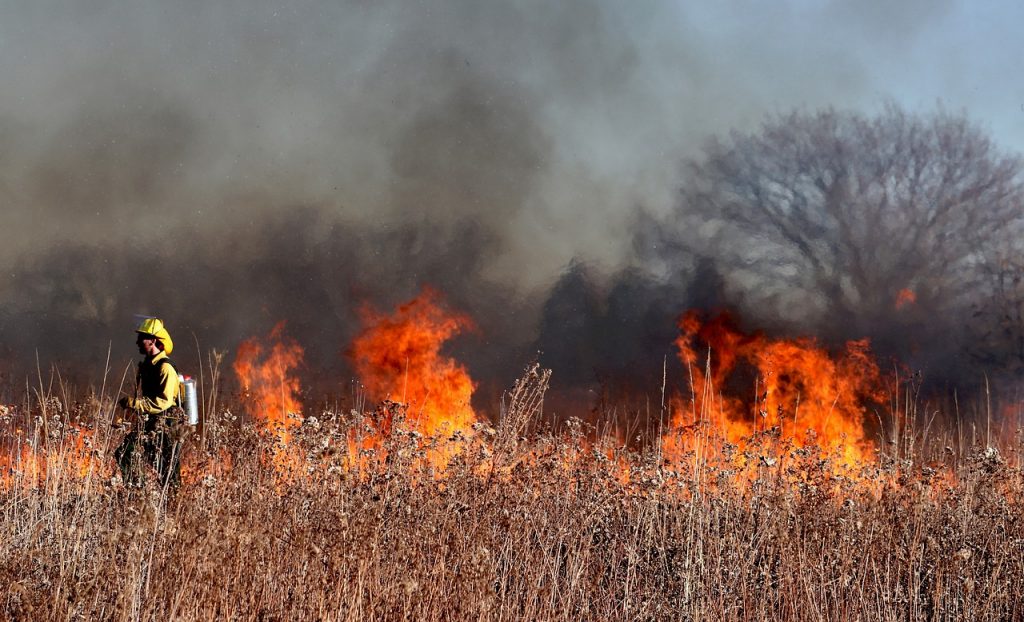
Fire, often perceived as destructive, plays a crucial role in the sequoia ecosystem, clearing the forest floor of accumulated debris and allowing the sequoia seeds to find fertile soil.
Remarkably, these giants possess a unique resistance to fire, with their thick, fire-resistant bark protecting them from the intense heat. As flames sweep through the landscape, the sequoias endure, and their cones rely on the heat to open, releasing seeds that will soon sprout into the next generation of towering sentinels.
Exploring Sequoia and Kings Canyon National Parks offers more than a mere encounter with nature; it’s a journey through time, witnessing the interplay of fire and sequoias, a testament to the resilience and adaptability of these awe-inspiring trees.
Check Fire Conditions: Always check for wildfires before you visit the park, and remember that some of them could be prescribed burns. Also, check air quality as fires from near and far can impact the quality here.
20. Check Out Our National Park Rankings
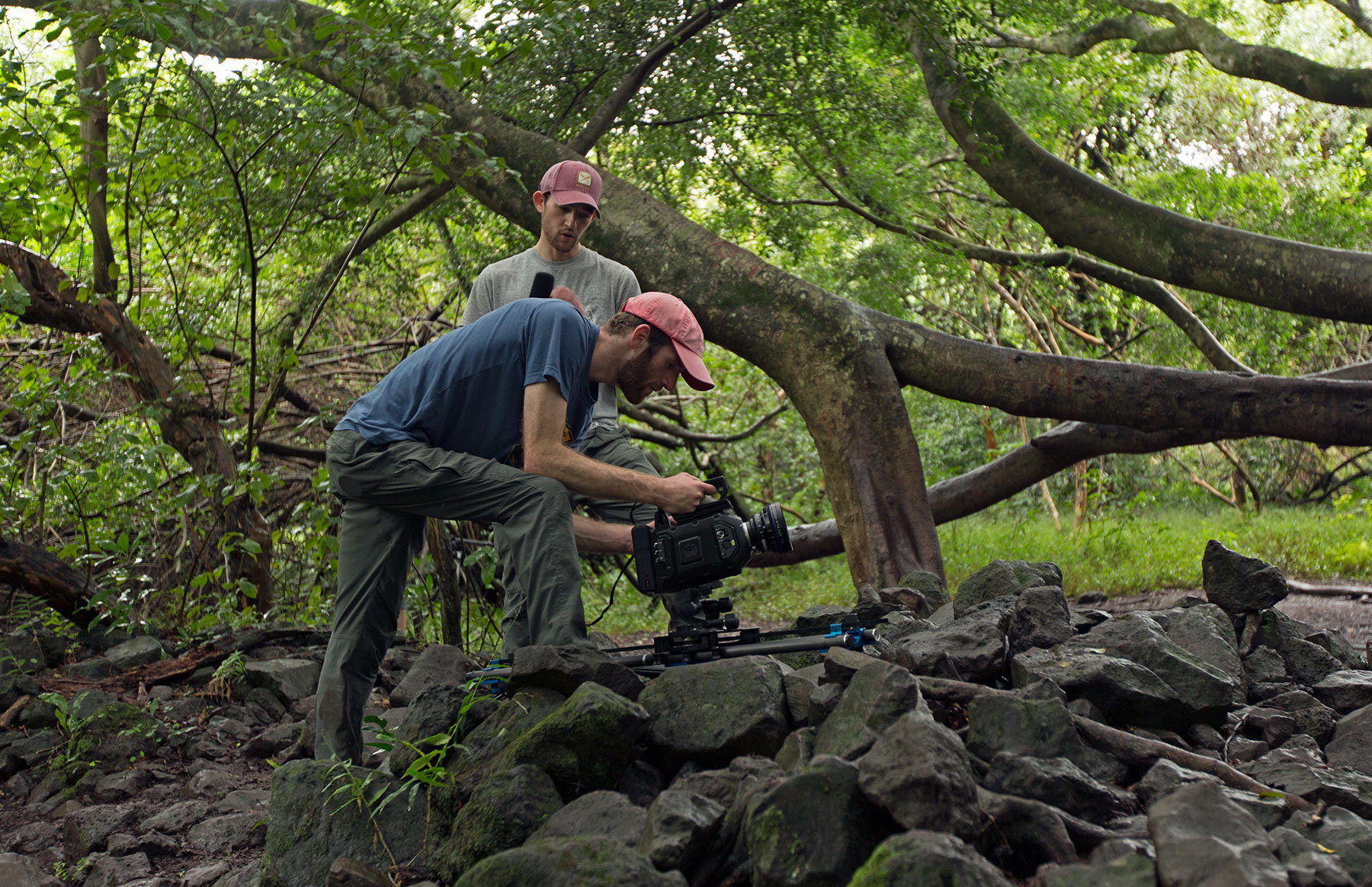
I hope you’ve enjoyed this article and learned things you didn’t know about the world’s second-largest tree. If you’re interested in learning more about our national parks, we hope you’ll please check out our complete rankings for all 63 of them.
About The People Behind More Than Just Parks
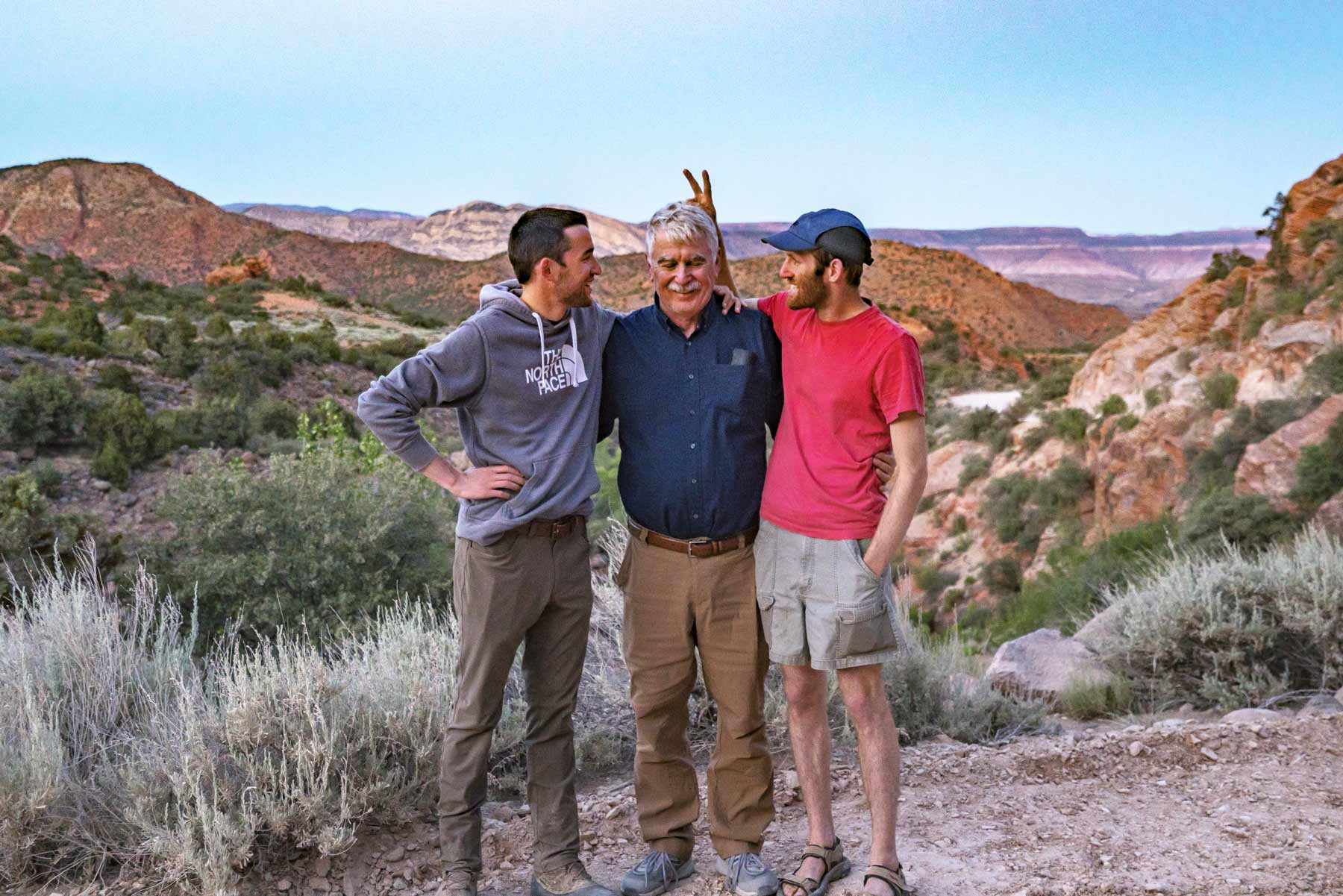
You should probably know that we don’t just make this stuff up out of thin air. My sons have spent their entire adult lives exploring and filming America’s national parks and public lands.
As for me, I’m a retired lifelong educator and proud dad of these two guys hopelessly obsessed with the national parks.
We’ve worked with the National Park Service, the Department of Interior, and the U.S. Forest Service for years creating films on important places and issues. Our work has been featured in leading publications all over the world and even some people outside of our immediate family call us experts on the national parks.
Meet The Parks Brothers
We’re Jim Pattiz and Will Pattiz, collectively known as the Pattiz Brothers (and sometimes the Parks Brothers) and we absolutely LOVE the national parks.
Our goal here at More Than Just Parks is to share the beauty of America’s national parks and public lands through stunning short films in an effort to get Americans and the world to see the true value in land conservation.
We hope you’ll follow our journey through the parks and help us to keep them the incredible places that they are. If you’re interested in joining the adventure, sign up below!
Pin General Grant Tree
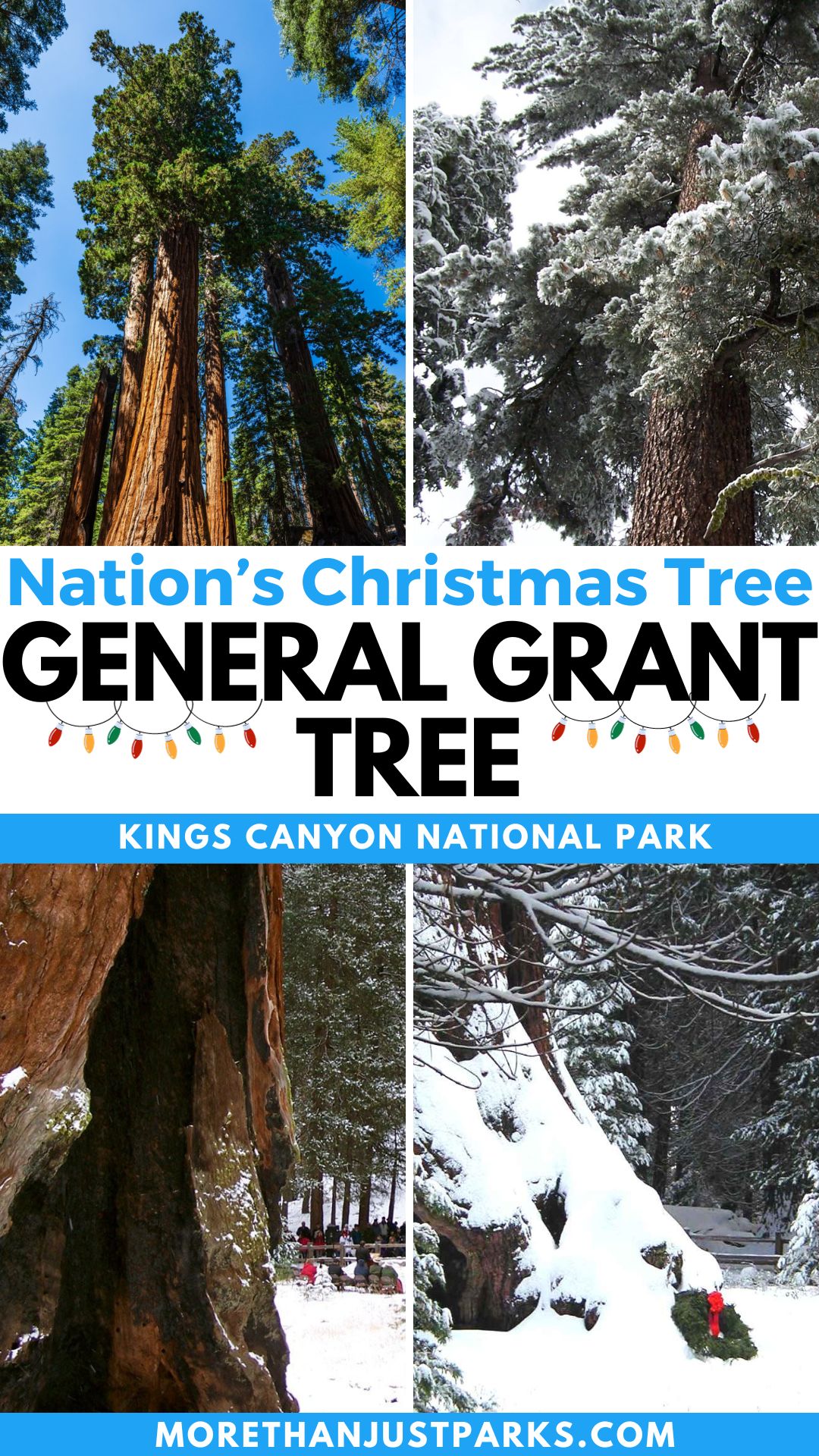

Helpful Related Links
Sequoia Facts: 15 AMAZING Facts About Sequoia National Park
Sequoia & Kings Canyon: 15 (GIANT) Sequoia & Kings Canyon National Parks Facts You Probably Didn’t Know
National Parks Near Bakersfield, CA: 7 Surprising National Parks Near Bakersfield
California National Parks: All 9 California National Parks Ranked Best to Worst
Yosemite National Park Facts: 10 Yosemite Facts That Will Change How You Look At The Park
Redwood National Park Guide: The Ultimate Guide to Redwood National Park
Redwood National Park Things To Do: 15 Stunning Things To Do in Redwood National Park
National Parks Rankings: ALL 63 US National Parks Ranked By Experts
Most Visited National Parks: Top 10 Most Visited National Parks
Least Visited National Parks: Top 10 Least Visited National Parks
National Monuments Ranked: ALL 128 US National Monuments Ranked (Best to Worst)

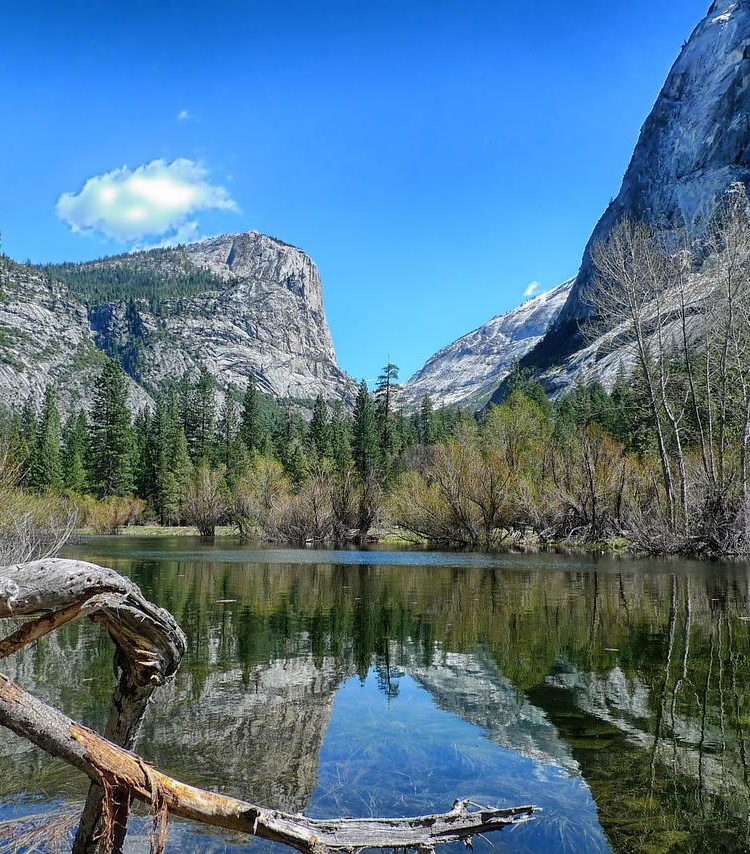
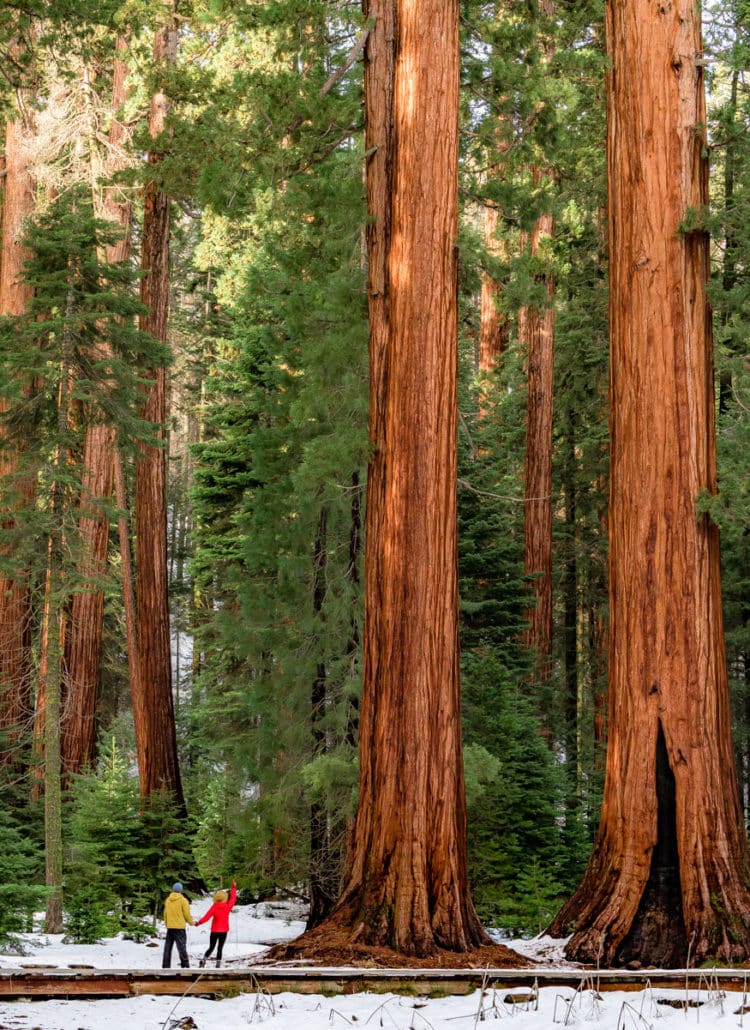
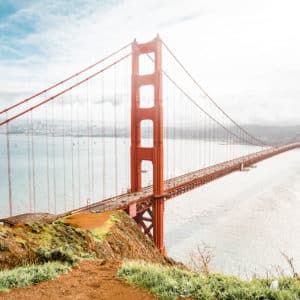

Leave a Reply